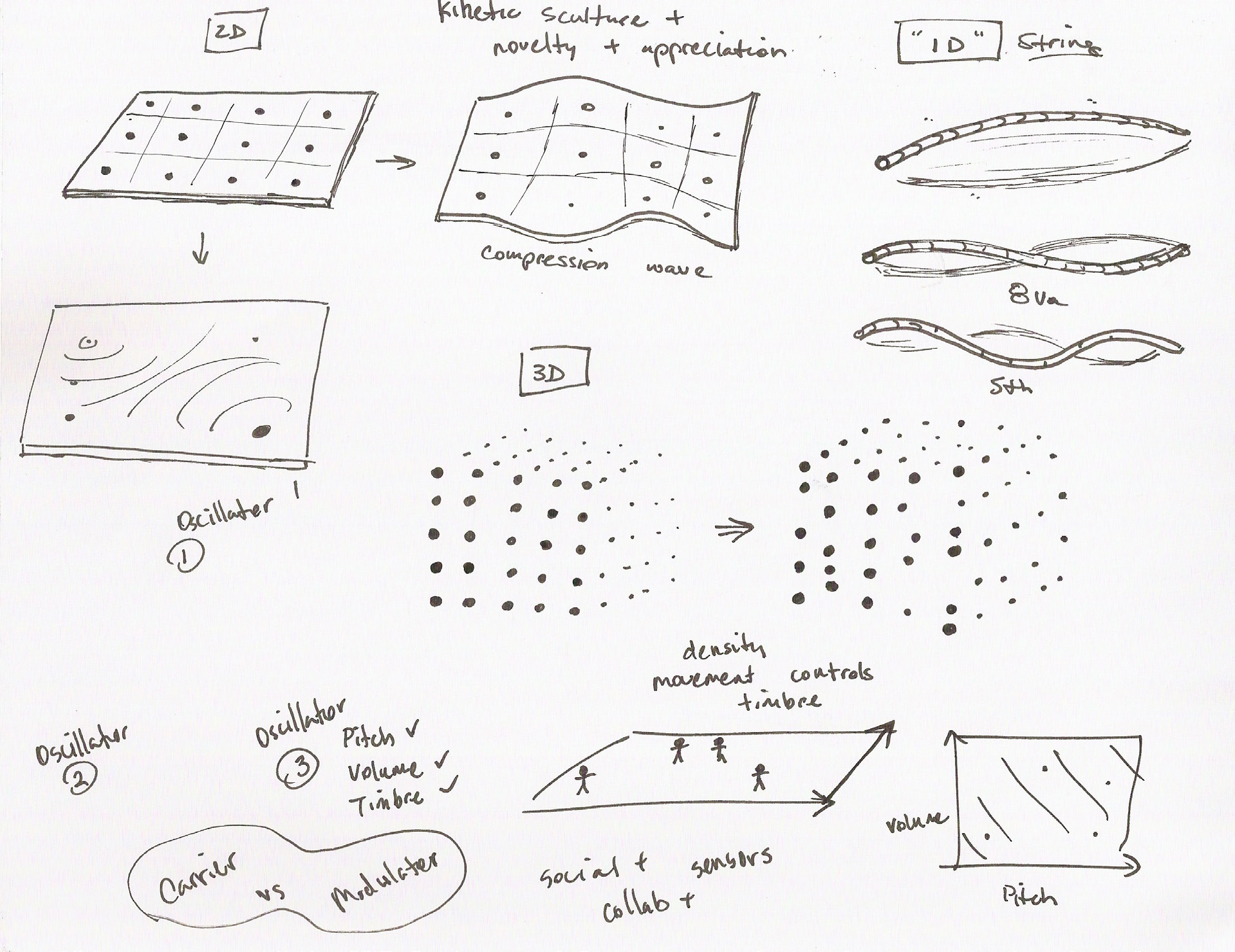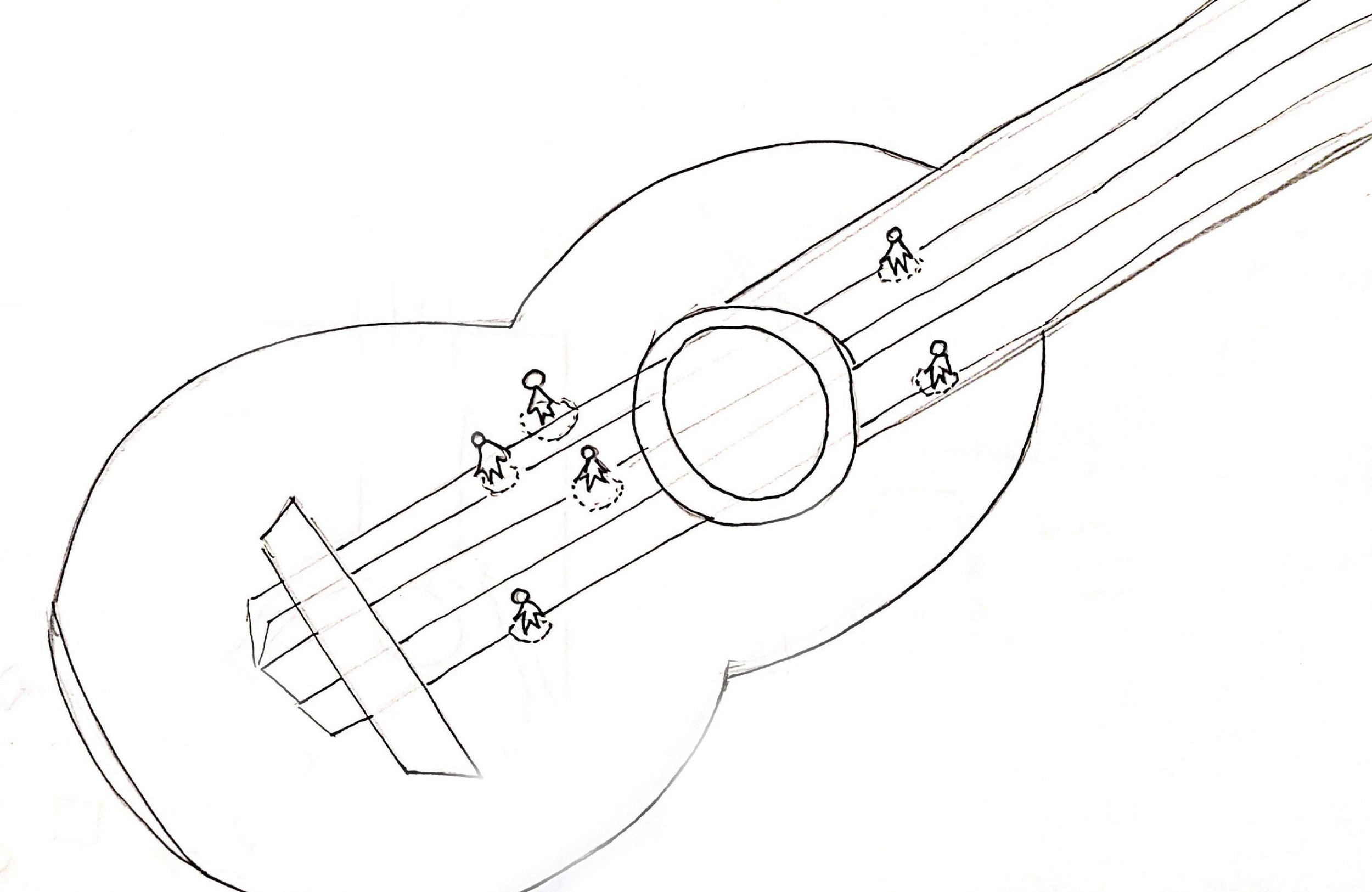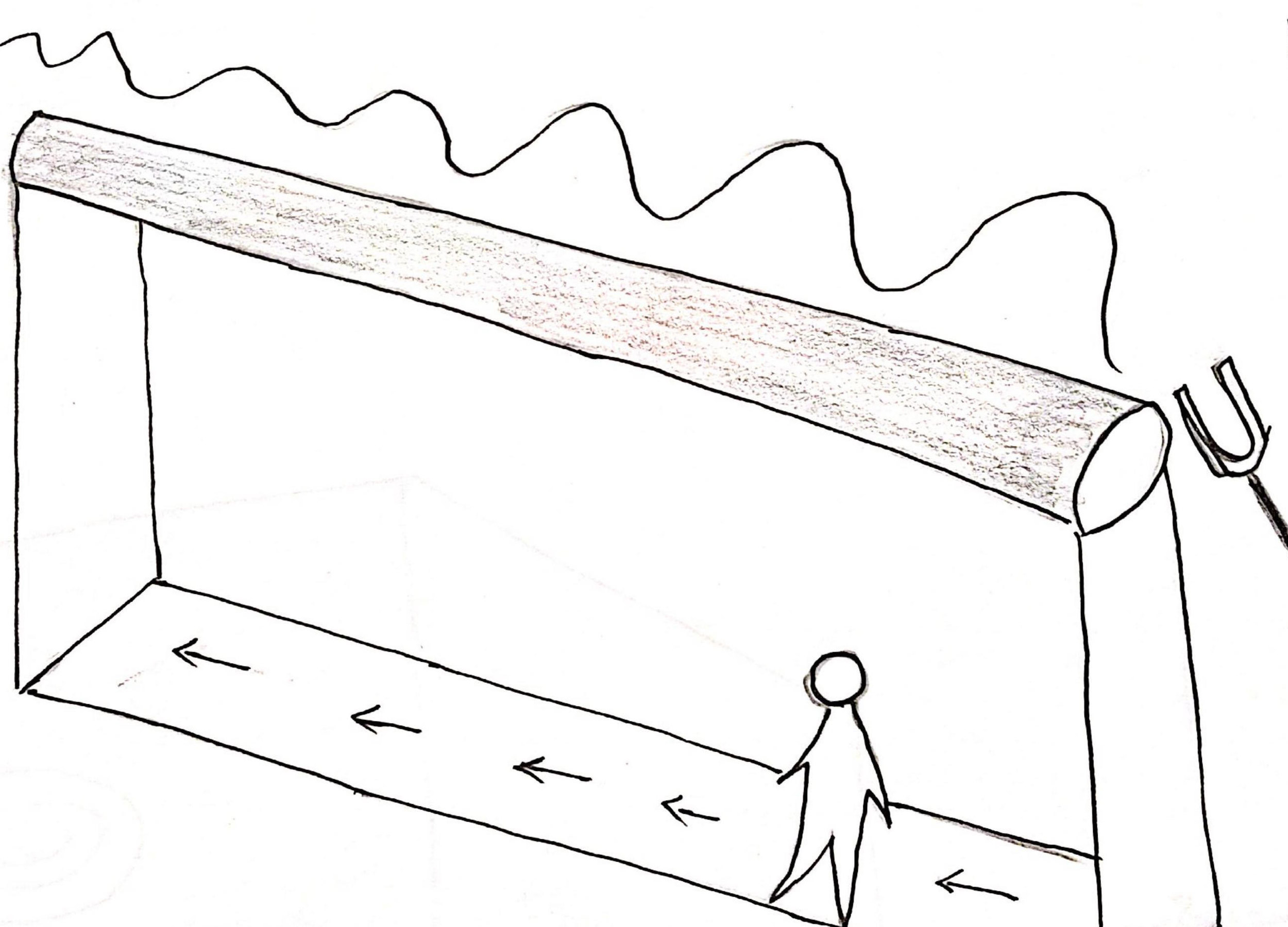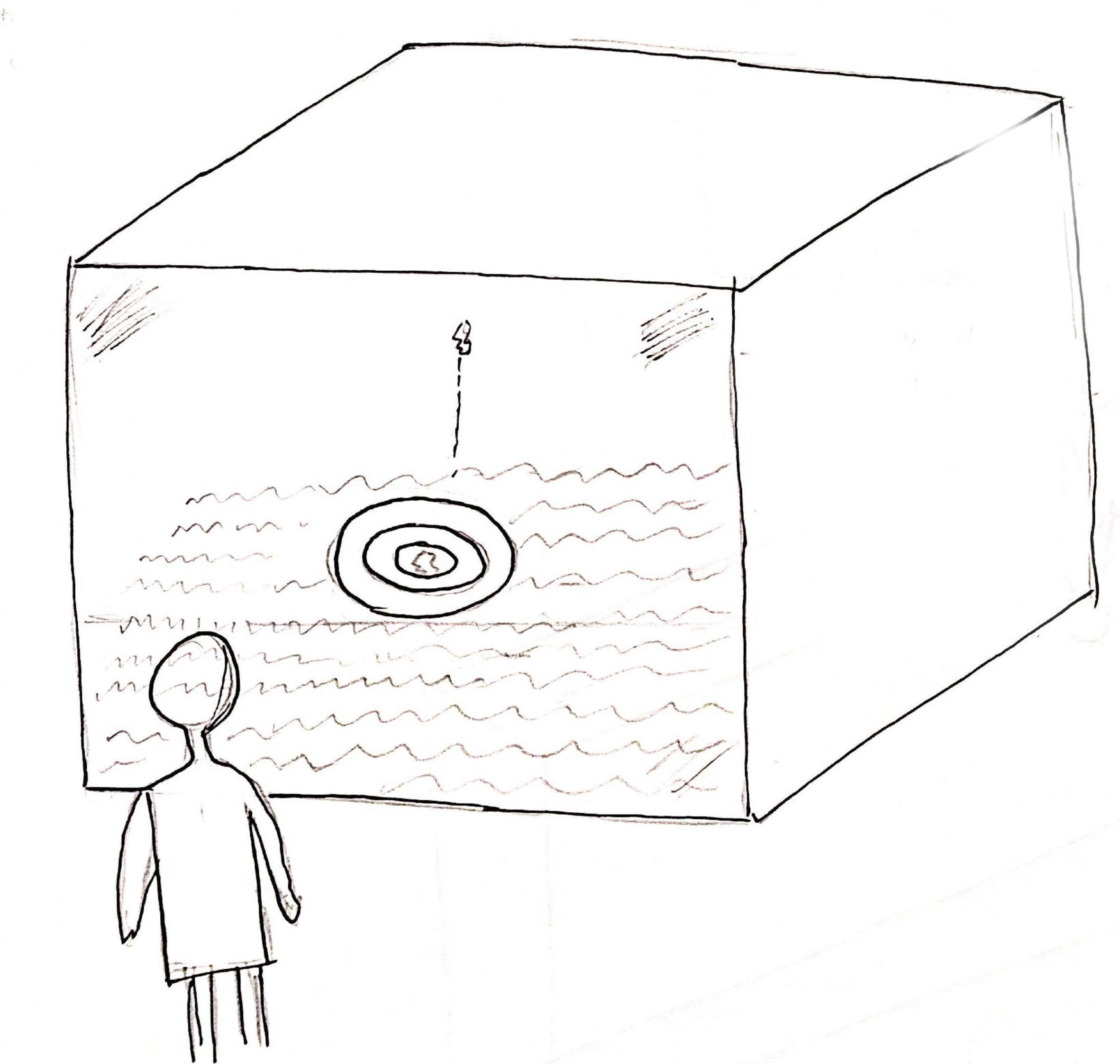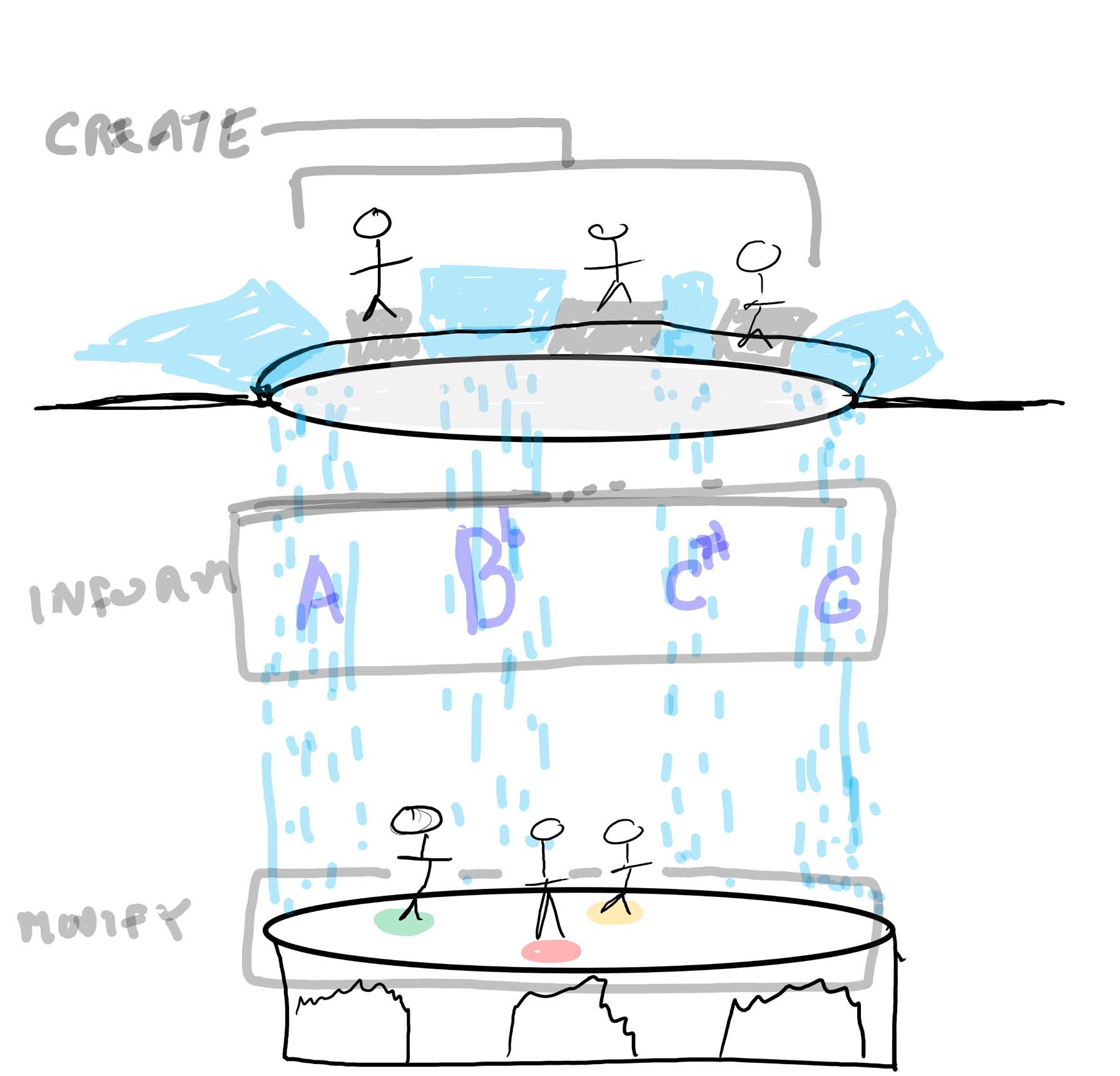The Project
Project Type
UX Design
8 Weeks
Team
Nava Tummalapalli
Brant Hughes
Role
Ideator, Researcher, Illustrator
During the design process a designer must take into consideration the potential interactions an artifact has with it's environment. This assignment pushed us as designers to not only create an interaction that was succesful in its own environment but to create the environment as well. To do this we deployed a wide array of evaluatory methods to gain insights into the users' understanding of the subject matter and potential issues that arise from its physical manifestation.
IDEA EXPLORATION
An extensive hunt for exemplars provided abstract creative ways to compose music, instruments that created music with unusual materials, and mesmerizing visualizations of sounds. In analyzing these exemplars, it became clear that there was a way to combine the topics of music composition, audio visualization, and the effect of materiality on sounds. Furthermore, we felt that the large scale of a museum exhibit allowed us to do so in a novel way that would be collaborative and immersive.
EXPERIENCE PROTOTYPING
Through our initial sketches we realized there were two types of exhibitions: immersive and collaborative exhibits that held little meaning educationally, and exhibitions that had passive interactions that work to teach the physics of sound. Reaching an impass within the group as to which direction we should move in, we created an experience prototype to inform us about how people explore physical spaces, collaborate within them, and how deep was their base understanding of visual interpretations of sound to see which direction yielded a greater value.
To do this we mapped 16 distinct soundscapes to the 16 pads of a drum machine – arranged in a 4 x 4 pattern. These sounds ranged from un-pitched wind noises and voice-like drones, to rhythmic beeps and pulses. We likewise designated 16 spaces within a square room. As participants moved around the room, one member would trigger the sounds on the drum machine accordingly.

One subject using headphones while the lights were on.
Key Findings- Users explored the space passively before trying to alter their initial auditory experience.
- Not having visible zones on the floor made an “exploratory open space” rather than one that was interactive.

One subject with the lights off, speakers instead of headphones, and a sound visualization projected on the wall.
Key Findings- A dark room featuring ethereal sounds created an environment reminicent of outer space and biased the users interpretation of the visuals.
- The sounds used were too difficult to distinguish both auditorily and visually.

Second subject was added to the room in the middle of another's experience.
Key Findings- People interacted with the space and others within it but did not collaborate to make music.
- The sounds created by multiple participants were not distinct enough to have them understand what sounds were caused by their own movements.
FURTHER EXAMINATION
Our experience prototypes lead us to conclude that undertaking music composition in a collaborative manner and understanding the physics of sound, may have been trying to do too much. It was difficult for us to let this concept go as it was something we all grew to love but we decided that we were largely unable to control people willingness to collaborate (especially in a productive manner). We decided that people's lack of understanding for the physics of sound , based on their confusion in regards to the projected visualizations, meant we had a subject matter that could be of value to people while still being broad enough to warrant further examination.
We mapped out aspects of the physics of sound in its most basic elements to understand what we would need to communicate to provide a learning experience. Due to the complexity of the subject material we modeled the museum layout in a way that mimicked how we came to understand the sound of physics during our own research phase, incrementally. We found that the physics of sound was best understood with exaggerated scale; that time should be elongated and particle size magnified. Additionally, we were motivated by our initial exemplars to dabble in materiality, more specifically, why things sound different in different types of environments.
PASTICHE SCENARIO
The pastiche scenario was counter-intuitive to our human-centered design methodologies but proved to be helpful in our process. Transitioning to a fictional story that was based on something "real" from our abstacted experience prototypes forced us to create rudimentary experiences and sequence them. In doing so, we quickly realized each of us envisioned elements of the exhibit in drastically different ways. Rather than belabor the pros and cons of each interpretation, we allowed our characters to do the talking for us.
Through this process we uncovered issues in accessibility, safety concerns, and in fostering collaboration.
CRITICAL DESIGN
Critical design for public consumption is best utilized when the topic/interaction being critiqued is one of general knowledge. Since we found that most people didn't understand the physics of sound, critical design was used to help us better understand our subject matter. For this exercise, we temporarily changed our topic to the music and life of Beethoven who continued to compose despite his gradual hearing loss.
This topic allowed us to explore three key features:
- Audio with visual representations of the sound (cymatics)
- Audio without visual representations of the sound
- Cymatics without the accompanying sound
Key takeaways from this exercise were the importance of a narrative in creating flow and understanding and the power of silence.
The Design
Our process lead us to the final topic of visualizing the physics of sound. The complex nature of the subject matter necessitated out having to constrain out projects scope. We created an exhibit consisting of 3 floors, each depicting a differenet aspect of the physics of sound. A centralized slow moving elevator transported the visitors through these differnt levels. We utilized animations projected on the interior walls to better convey the change in scale related to time and size between the floors.

